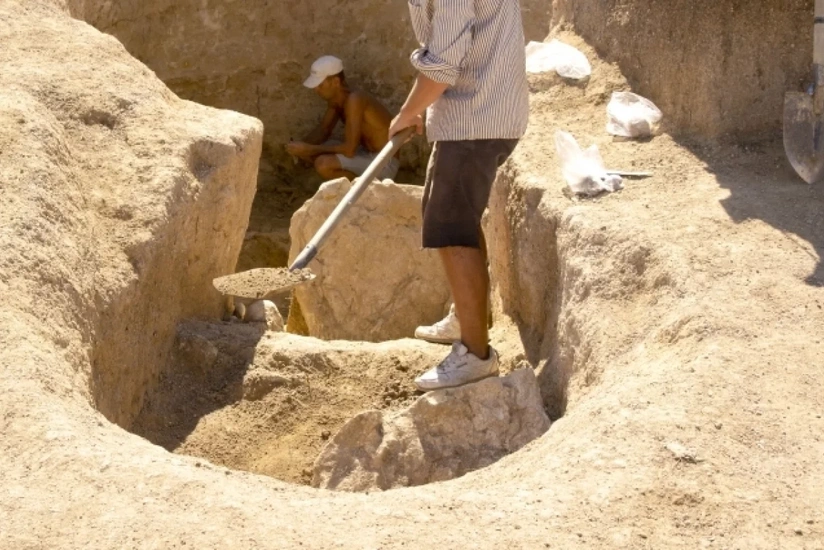Excavation in Greece reveals archaic-era elite burial of "Lady with Inverted Crown"
- 28 November, 2025
- 09:12

An excavation on the eastern slopes of Lake Kifisida, also known as Kopaida, Greece, has uncovered an elite Archaic-era burial archaeologists are calling the "Lady with the Inverted Crown (Diadem)," Report informs referring to Greek Reporter.
The site lies about six kilometres (3.7 miles) north of the Sanctuary of Apollo Ptoios and ancient Akraiphia in central Greece.
The rescue excavation is carried out by the Ephorate of Antiquities of Phthiotis and Evrytania.
The investigation began during the construction of a photovoltaic park, where the work threatened to disturb buried remains, prompting officials to launch a full rescue excavation. The discoveries reveal a culturally rich landscape surrounding Lake Kifisida.
Archaeologists identified a cemetery dating to the Archaic and Classical periods, along with architectural remains of a fortified settlement from the same era. Older maps refer to the area as "Spitia–Katavothra."
The cemetery is arranged in clusters and includes pit graves, funerary pyres, and tile-roofed burials. Excavation is ongoing, but findings from the first 40 graves point to a community of high status and considerable wealth.
The most striking discovery is the burial of a woman from the second half of the 7th century BC. Researchers named her "The Lady with the Inverted Crown" due to the unusual placement of the bronze diadem found on her head. A preliminary study of her dental remains suggests she was between 20 and 30 years old.
The diadem is a finely crafted bronze crown. It features a band-shaped form topped with a large rosette described as "in the form of a sun."
Made using the repoussé technique, it carries a frieze of two heraldic lions-one male and one female-traditional symbols of royal authority. Archaeologists note that the crown had been placed upside down. The lions appear inverted, and the braided ornament lies along the lower edge.
The burial reflects the shifting political landscape of the mid-7th century BC, a time when hereditary kingship was fading, and aristocratic elites were rising. Her high status is reinforced by the rich grave goods placed beside her.
These include two oversized Boeotian-type fibulae engraved with horse motifs, a necklace with a large vase-shaped pendant, bone and ivory beads, amber beads, sheet-metal rosettes, bronze earrings, bangles, and spiral rings worn on every segment of her fingers.
In the same cluster, archaeologists found the burial of a four-year-old girl crowned with a bronze diadem decorated with rosettes. Her grave goods closely match those of the noblewoman, suggesting a family connection.
Other graves in the cemetery have yielded valuable finds. A mid-6th-century BC female burial held a Siana-type kylix decorated with roosters and a trefoil-mouthed oinochoe painted with mythical figures and Hermes shown as "Psychopompos," the guide of souls.
Researchers also uncovered bronze phialai with raised omphalos centres and black-figure and black-glazed vases linked to the Akraiphia pottery workshop.